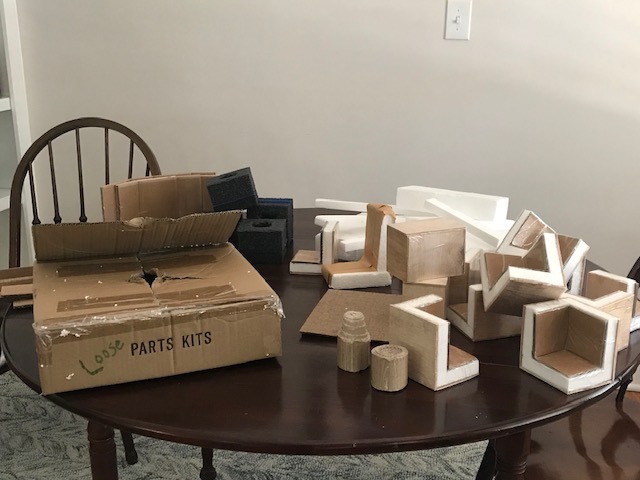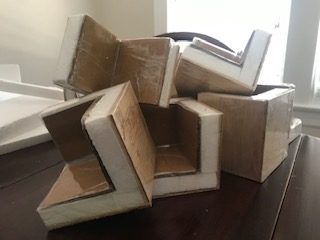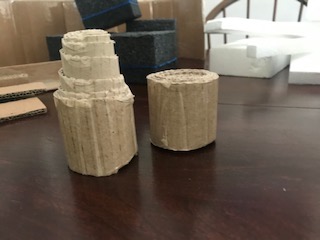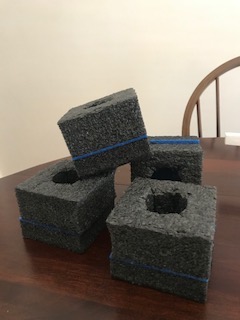As we enter week seven sheltering at home during the COVID pandemic, outside of electronics, you may find your child’s interest waning in some of their traditional toys. Cars, trucks, dolls, board games, kitchen sets– many may no longer hold the same appeal.
Why might that be? What do these “traditional” toys have in common?
Nearly all are what play experts refer to as objects for directed play. These toys telegraph to the child what they are and most importantly, what to do with them.
For the most part, they give children directions for HOW and WHAT to play. It’s not to say they don’t prompt imaginative play, but their play value is limited because the range of what to do with them is prescribed.
What then might maintain and expand a child’s attention and involvement?
You most likely already have most of them at hand.
Boxes, tape, paper towel rolls, containers, beads, sticks, rocks and mulch.
What do these items have in common? They’re known as non-prescriptive “loose” parts and they provide unlimited opportunities for play.

Loose parts are things that children can play with in any way that pleases them. In a play, loose parts are materials that can be moved, carried, combined, redesigned, lined up, and taken apart and put back together in multiple ways. They are materials with no specific set of directions that can be used alone or combined with other materials. (Read more about the origins of loose parts here).
Loose parts found in nature that may be right outside your door include sticks, mulch, pebbles, logs or “tree cookies.” Other loose parts include rope, canvas, sheets — anything that might be developed into a structure or multiple items of the same type, such as empty thread spools, wooden blocks, hula-hoops and even toilet plungers.
What is the value of loose parts behind entertaining your children well beyond your Zoom call? Loose parts encourage children to create, solve problems and work cooperatively. All of these are skills needed for life spent inside and outside. They provide the opportunity for children to have a degree of agency over their play environment rather than simply responding to what is provided them.
Many of us have had the experience of a child having less interest in the gift presented to them than in the box it came in. That’s because the box opens up a world way beyond what’s in it.
Or in my case, watching and goodies. What was she was most interested in (ok, beyond the candy)? The grass at the bottom of the basket. See the video And why not? The grass could have a multitude of uses, including the tactile sensations that prompt explorations that are also important for her healthy development.
So open up your cabinets, your closets, the basement – or go outside. Look for open ended materials that might provide rich experiences.
It may just look like junk to us, but to a child the possibilities are endless!